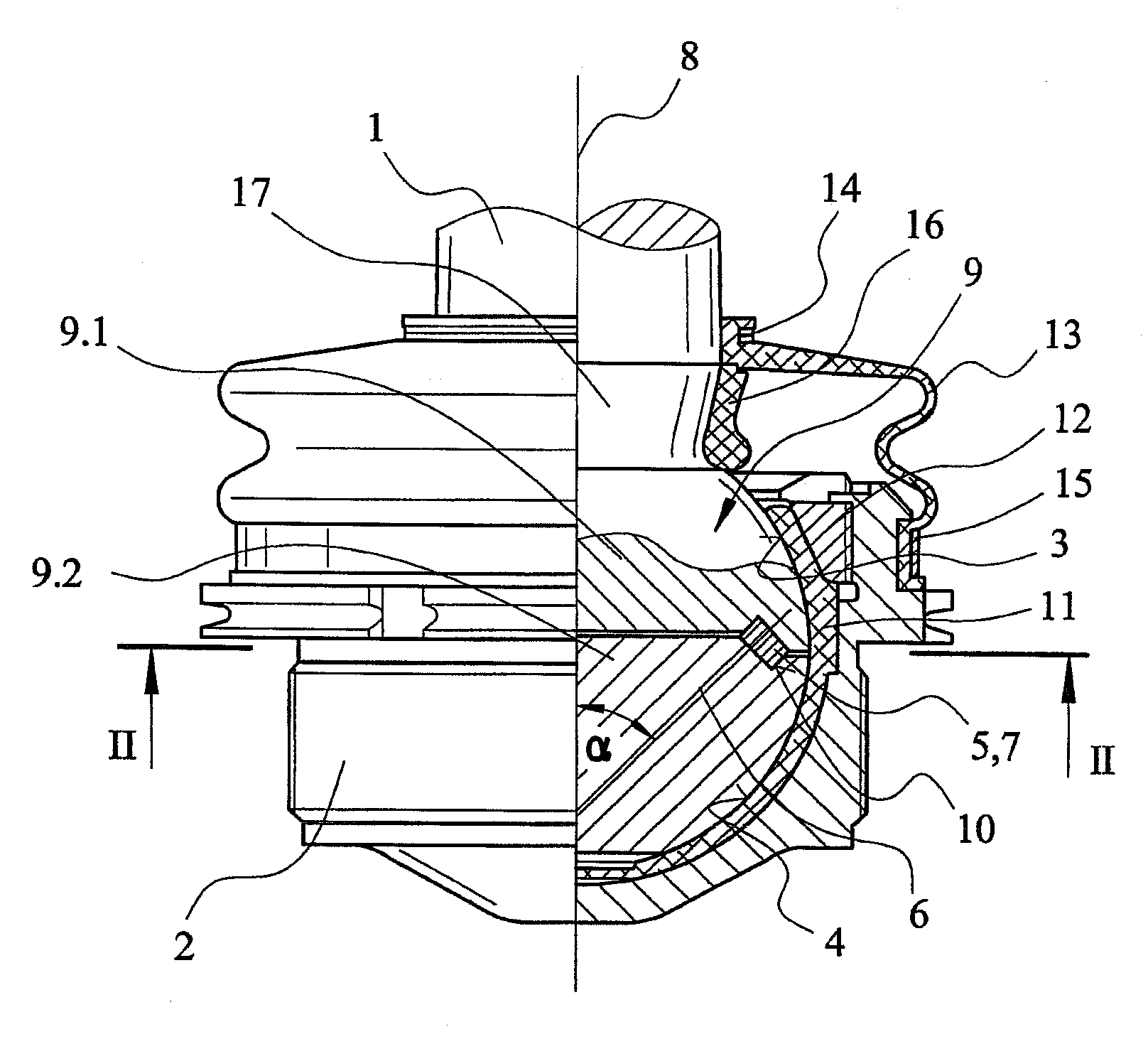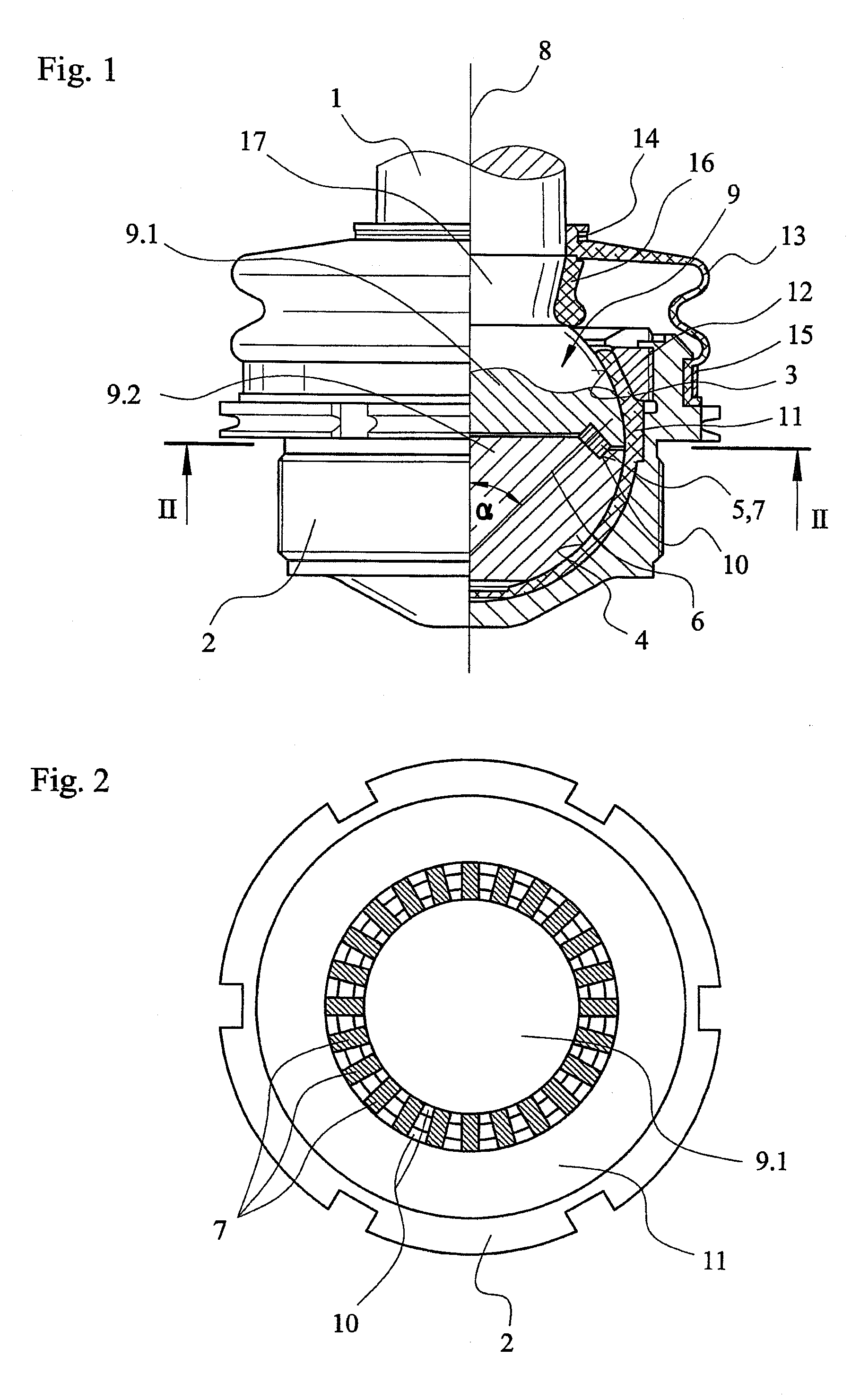Ball and socket joint
a socket joint and ball socket technology, applied in the direction of shafts, bearings, pivots, etc., can solve the problems of inability to meet the specifications mandated by law regarding the steering return, assume considerable high values, adverse effects, etc., and achieve low friction, improved absorption of both radial and axial loads, and simplified manufacturing
- Summary
- Abstract
- Description
- Claims
- Application Information
AI Technical Summary
Benefits of technology
Problems solved by technology
Method used
Image
Examples
Embodiment Construction
[0028]Referring to the drawings in particular, FIG. 1 shows an example of an embodiment variant of a ball and socket joint according to the present invention as a partial section. This ball and socket joint has a ball pivot 1, which is mounted pivotably and rotatably in a housing 2. In the example being shown, the housing-side end area of the ball pivot 1 has a first spheroidal bearing surface 3, which forms a joint ball designated as a whole by 9 together with a second spheroidal bearing surface 4 connected to the ball pivot 1.
[0029]A roller bearing 5 is inserted between the joint ball parts 9.1 and 9.2. This roller bearing 5 comprises running tracks 10, which are present in the joint ball parts 9.1 and 9.2 and into which numerous rollers 7 are inserted loosely. The peculiarity according to the present invention is that the rollers 7 assume an oblique position in relation to the central longitudinal axis 8 of the ball pivot 1. An oblique position is defined here as a sloped install...
PUM
 Login to View More
Login to View More Abstract
Description
Claims
Application Information
 Login to View More
Login to View More - R&D
- Intellectual Property
- Life Sciences
- Materials
- Tech Scout
- Unparalleled Data Quality
- Higher Quality Content
- 60% Fewer Hallucinations
Browse by: Latest US Patents, China's latest patents, Technical Efficacy Thesaurus, Application Domain, Technology Topic, Popular Technical Reports.
© 2025 PatSnap. All rights reserved.Legal|Privacy policy|Modern Slavery Act Transparency Statement|Sitemap|About US| Contact US: help@patsnap.com


